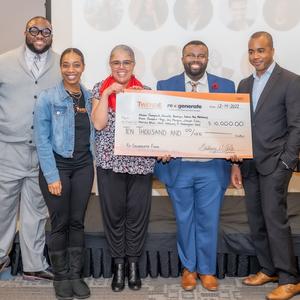
Like many venture capitalists, Vic Gatto had the majority of his firm’s capital deposited at Silicon Valley Bank.
Unlike many venture capitalists, Gatto withdrew those funds from the San Fransisco-based lender years prior to its collapse.
“We moved all the Jumpstart [Capital] relationships to three different banks two and three years ago. It was not related to [the failure], we just built some relationships with other banks,” said Gatto, Jumpstart’s managing general partner. “We were lucky. I can’t say it was brilliant insight. …To be able to have our business scale — I wasn’t expecting [the collapse] to happen — but you don’t want any single point of failure in the process.”
Thousands of other startups and venture capital firms weren’t so lucky, as mass withdrawals from customers triggered a run that quickly led to federal regulators taking over SVB. More about the history of the bank and the steps that led to its collapse here.
While the federal government has stepped in to back up customer deposits, Gatto said SVB’s failure could leave a lasting impact on entrepreneurs and venture capital firms across the country.
Founded nine years ago by Marcus Whitney and Vic Gatto, Jumpstart is one of Nashville’s most high-profile health care investment firms. The firm invests $150,000 in two cohorts of pre-seed health care startups from around the country each year. Previous Jumpstart investments include Nashville-based startups Greenlight Medical, Belle, MusicCityMed, Huso and Satchel.
Jumpstart expects to invest in 40 to 50 startups this year, said Gatto, who believes SVB’s collapse could bring more attractive investment opportunities to the Nashville-based firm. The reason: availability of capital.
SVB’s underwriting process was more understanding to the realities of the startup world, making it one of the few places early-stage companies could access debt capital, Gatto said. The total venture debt issued in 2022 was $32 billion, according to a Forbes report. Nearly 21% of that debt, or $6.7 billion, came from SVB.
“The result [of SVB’s collapse] is going to be less capital available, and probably very little debt capital available to startups. It will be harder to finance startups going forward,” Gatto said. “I think startups and the health care startups I focus on, we need more of them and they’re an important part of the solution. Making it more difficult to create a new innovation, bring it to market, create jobs, is not going to help the economy or help health care to be more innovative.”
On the flip side, less debt capital in the market boosts the importance of venture capital and can result in higher-quality opportunities for firms like Jumpstart.
“It’s a really attractive time to invest. If anything, more attractive [now] because there’s less capital. I think that’s bad for the overall market but good for Jumpstart Foundry,” Gatto said.
Several of Jumpstart’s current 155 portfolio companies were among the startups with accounts at SVB, most of them with deposits over the $250,000 FDIC insured limit, Gatto said. Some of those companies had additional insurance on funds over $250,000, but because SVB’s platforms were shut down, the companies couldn’t access their capital in the immediate aftermath of the collapse.
As a result, about four Jumpstart portfolio companies had concerns the first weekend after SVB’s failure about making payroll.
Jumpstart’s companies with SVB accounts rebounded, along with thousands of other across the country, but the demise of the bank that helped many of those startups become successes will be felt by entrepreneurs for years to come.
“It’s sad. Silicon Valley Bank was a great bank to startups for a long time. They didn’t manage their treasury very well but they didn’t do anything fraudulent and it’s sad to see that bank go out of business,” Gatto said.







